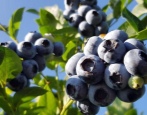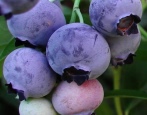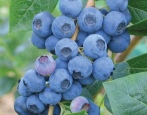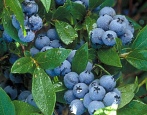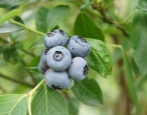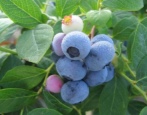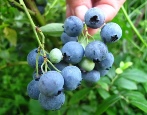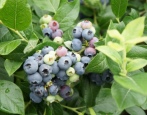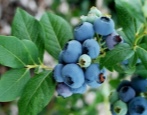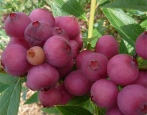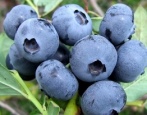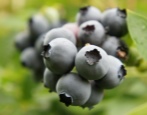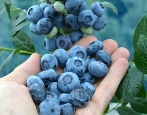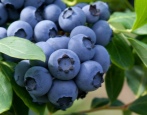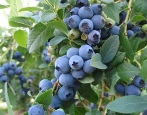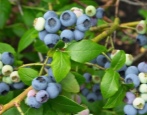
- Name synonyms: Bluetta, Vaccinium corymbosum Bluetta, Bluette, Bluetta
- Ripening terms: early
- Growth type: tall
- Bush height, m: 0,9-1,5
- Taste: sweet and sour, with a slightly tart aftertaste
- Yield: high
- Average yield: 4.5-9 kg per bush
- Fruit size: medium
- Fruit shape: spherical, slightly flattened
- Fruit color: dark blue
Blueberry variety is one of the most actively used in the industrial production of berries. Shrubs are tall, while they are one of the lowest in this category, but also one of the most fruitful. Easy to care for, early ripening berries have become especially popular in recent years, as they are unpretentious in care, bear fruit well and survive difficult weather conditions well.
Description of the variety
Bluetta is noted by experts as the most suitable variety for active cultivation. The unique features of the bushes, fast ripening and large, abundant berries allow you to get an early and bountiful harvest with proper care. Moreover, this variety is unpretentious to soil and weather conditions.
Fruit characteristics
The variety belongs to large-fruited. Quite large berries ripen on the bushes - 12-15 millimeters in diameter. The color is deep dark blue. The shape of the berries is quite unusual, they are not perfectly round, but slightly flattened, which immediately distinguishes them from other blueberry varieties. The skin covering the fruit is delicate and has a light waxy coating, which makes the berries even more attractive and appetizing. The average weight of each is up to 2.5 grams.
Taste qualities
It has a rich, bright sweet and sour taste, typical of blueberries, with a slightly tart aftertaste. When fully ripe, the palatability becomes especially high and is fully preserved even after long standing. Ripe berries have an easily perceptible tart pleasant aroma that lasts for a long time.
Ripening and fruiting
Blueberries of the Bluetta variety begin to harvest in the fourth year after planting. It is a self-fertile shrub that does not require special pollination care. After the beginning of fruiting, it bears a crop every year without interruption.
Blueberries ripen gradually, going through several stages, during which the peel of the fruit changes shades of color until it acquires a deep blue. The variety belongs to the early, harvesting begins in mid-July. In regions with a stable warm climate, the control date of ripening is July 10.
Yield
Bluetta belongs to high-yielding varieties, from one bush per season, an average of 4.5 to 9 kg of berries can be removed. Subject to all the rules of care and a rather mild climate, it is possible to obtain record harvests every year.
Growing regions
Due to its unpretentiousness and high frost resistance, Bluetta blueberry feels great in almost any region of Russia, with the exception of the Far North.
Growing and care
Blueberry bushes are especially fond of the sun, so when choosing a planting site, shady places should be avoided. The plant will not bear fruit if there is a lack of sun. This variety is unpretentious, requiring moderate care during the growing period. Due to the poorly developed root system, a rather tight planting is allowed.
In early spring, a mandatory pruning is performed, and then from April to June, top dressing, which provides a higher yield.
In the event of a hot summer without rain, it is worth regularly watering the bushes.Watering is done once a week; a plant requires 10-20 liters of water, depending on its size and age.


Disease and pest resistance
It is considered resistant to most pests and diseases characteristic of berry growing areas. For private boarding, no special handling is required.

Winter hardiness and the need for shelter
Refers to winter-hardy varieties that perfectly tolerate frost. The only problem is early flowering. In regions where late frost is likely, flowers may be damaged. In this case, gardeners are advised to cover flowering bushes at night.

Location and soil requirements
Differs in unpretentiousness. The main requirement for successful growth and fruiting is the presence of the sun. When planting, shady areas should be avoided. For better yields, the bushes should be planted in well-drained soil with sufficient moisture, light and loosened, containing the required amount of organic matter and the required acidity (pH 3.5-4.5)







